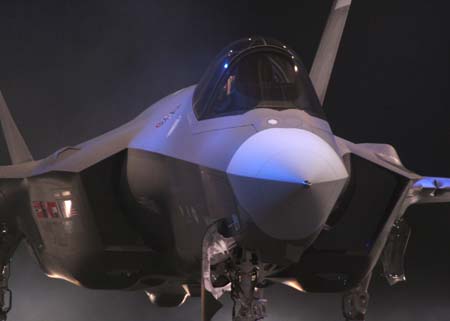Once again, despite Congress’ consistent action supporting an alternate engine for the F-35 Lightning II Joint Strike Fighter, the Pentagon’s Fiscal 2010 budget proposal, released May 7, has no funding for a competitive engine. Less than two months ago, Rep. John Murtha (D-Pa.), chairman of the defense appropriations committee, chastised defense witnesses over the Pentagon’s persistent refusal to continue funding the alternate engine being developed by General Electric and Rolls Royce, saying that Congress believes having a second engine would be “cost effective” because of the long production run for the new fighter. Currently, Pratt & Whitney’s F135 engine is the sole engine under production for the F-35. Upon news that the Pentagon, once again, has tried to draw a line in the sand, GE issued a statement, “In the long term, the investment in the F136 engine will more than pay for itself—as opposed to a monopoly and all of the cost consequence that come with it.” The Pentagon has invested more than $2.5 billion in development of the F136, which GE says is “70 percent of the total development costs needed to bring the engine to production.” Various studies have supported the long-term benefits of an engine competition, but the Pentagon insists it would be cost-prohibitive in the short-term. However, lawmakers on both sides of the aisle appear to agree with GE, which said in its statement: “The F136 brings competition to the F-35 propulsion system, which otherwise will result in a decades-long, $100 billion engine monopoly handed to a sole-source provider. … Competition is the critical cost-control mechanism for defense procurement.”
again, despite Congress’ consistent action supporting an alternate engine for the F-35 Lightning II Joint Strike Fighter, the Pentagon’s Fiscal 2010 budget proposal, released May 7, has no funding for a competitive engine. Less than two months ago, Rep. John Murtha (D-Pa.), chairman of the defense appropriations committee, chastised defense witnesses over the Pentagon’s persistent refusal to continue funding the alternate engine being developed by General Electric and Rolls Royce, saying that Congress believes having a second engine would be “cost effective” because of the long production run for the new fighter. Currently, Pratt & Whitney’s F135 engine is the sole engine under production for the F-35. Upon news that the Pentagon, once again, has tried to draw a line in the sand, GE issued a statement, “In the long term, the investment in the F136 engine will more than pay for itself—as opposed to a monopoly and all of the cost consequence that come with it.” The Pentagon has invested more than $2.5 billion in development of the F136, which GE says is “70 percent of the total development costs needed to bring the engine to production.” Various studies have supported the long-term benefits of an engine competition, but the Pentagon insists it would be cost-prohibitive in the short-term. However, lawmakers on both sides of the aisle appear to agree with GE, which said in its statement: “The F136 brings competition to the F-35 propulsion system, which otherwise will result in a decades-long, $100 billion engine monopoly handed to a sole-source provider. … Competition is the critical cost-control mechanism for defense procurement.”
Lockheed Martin projects more than a billion dollars of losses on a classified program, but company officials said April 23 they are confident it will turn profitable by 2028 and become a "franchise" system in the U.S. military.